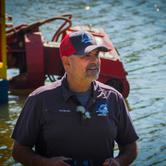Fall Time Pond Maintenance Tips
The hot days of summer are almost over, which means fall is just around the corner. Falling leaves, cooler temperatures, and even a slight crisp in the air tell you that the season is changing. If you are a homeowner, HOA, or golf course manager and have one or more ponds on your property, there are a few things that you should be doing in the next few weeks. Falltime pond maintenance is crucial not only for the health of your pond but also to save you a lot of money and maintenance headaches come springtime. We will share five tips on preparing your pond for the upcoming change in seasons to stay healthy and beautiful once the weather starts to warm up again.
Clean up Organic Debris
One of the most significant issues ponds face is the organic leaf debris and other sediments that make their way into the pond and settle down at the bottom. No beneficial bacteria are at the bottom of your pond to break it down. As fall turns winter and winter turns spring, this organic matter accumulates massive amounts of harmful nutrients in the water. These nutrients will cause an algae outbreak that could destroy your pond by choking all plant, aquatic, and fish life. Nutrient-rich water helps feed these unsightly nuisance algae blooms. By picking up fallen leaves every couple of days and disposing of them properly, you’re helping prevent a natural chain of events from occurring, which will cause your pond to stagnate and become smelly and unsightly when the temperatures start to rise.
Check Your Mechanical Gear
Do you have pumps, aquifers, and other mechanical gear inside and around your pond? If so, remove any organic debris that has made its way inside to ensure the filters aren’t clogged. The last thing you want is a pump to fail in winter when temperatures can be unfriendly. Now is also the time to purchase replacement parts. Manufacturers run out of stock of a particular pump, filter, or other components, often leading to a long backorder. It’s better to have what you need on the shelf before something breaks.
Fish and Aquatic Life
In most parts of the country, ponds freeze during the first frost, which occurs towards the middle to end of fall. While most fish species, like trout, are well-adapted to colder temperatures, some might not fare as well. You can add a cold-water bacteria additive to your pond, which will help reduce sludge and fish waste and, in some cases, remove dead and decaying plant material. This bacteria can help keep your pond healthy and crystal-clear even in the middle of the winter. You should also avoid feeding your fish during the winter. Their metabolisms have slowed, and they won’t be hungry. The added food will turn into excess nutrients, raising nitrites and nitrates to potentially dangerous levels.
Dredge Your Pond
If you haven’t dredged your pond in a while, fall is the perfect time to do so. Dredging can remove hundreds or potentially thousands of pounds of nutrient-rich sludge, which causes nuisance algae breakouts and fish die-offs. The sediment removed is excellent for flower and plant beds, providing a healthy organic fertilizer. Come springtime you’ll find that your flowers, shrubs, and bushes will look better and brighter than they have in a long time.
Nationwide Pond Dredging
A little bit of TLC goes a long way regarding your ponds. At American Underwater Services, we’ve helped countless HOAs, golf courses, and homeowners dredge their ponds. Our professional and expert dredgers can travel anywhere in the country to help improve the health and lengthen the life of your little slice of nature. Call (817) 377-8512 to learn more about our dredging and pond maintenance services. [author_box]




